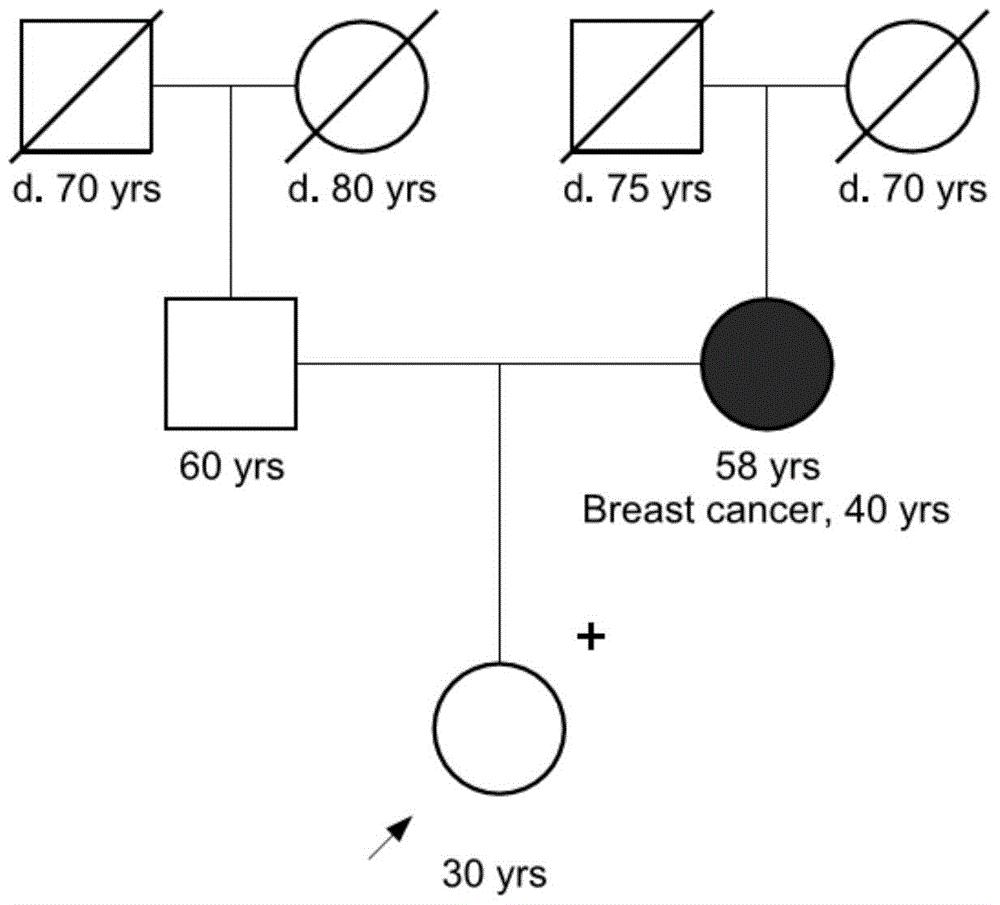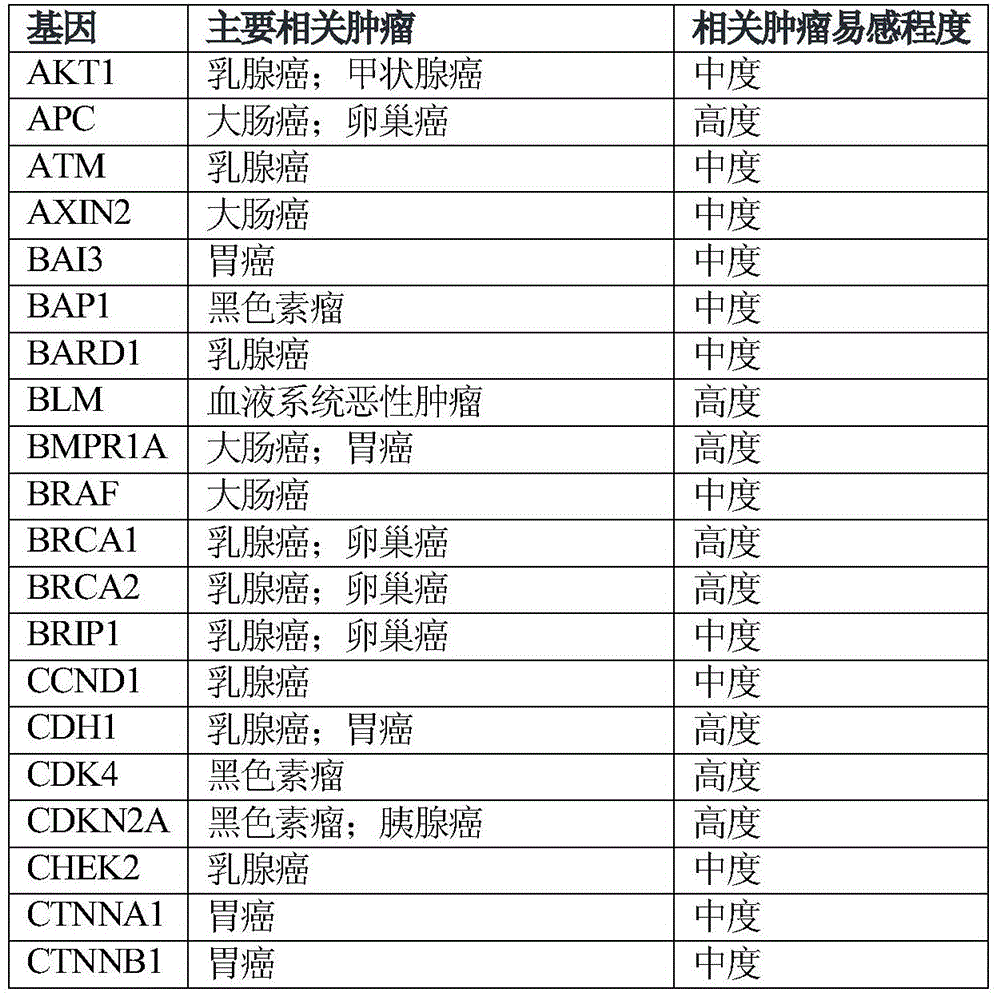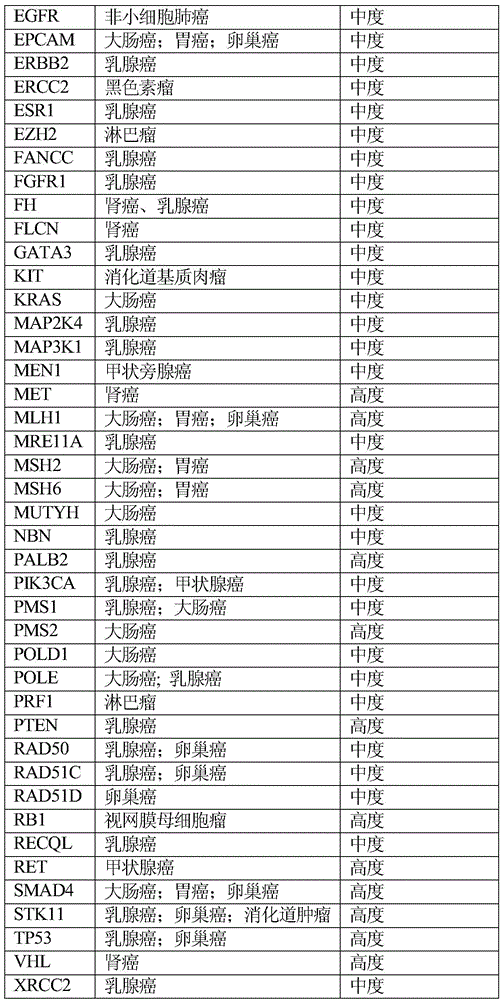Tumor susceptibility 62 genes and application thereof
A technology for susceptibility genes and tumors, which is applied in the field of detection systems for assessing tumor susceptibility, and can solve problems such as the lack of research data on Asian populations
- Summary
- Abstract
- Description
- Claims
- Application Information
AI Technical Summary
Problems solved by technology
Method used
Image
Examples
Embodiment 1
[0049] Example 1. Selection and detection of multiple tumor susceptibility genes
[0050] 1. Case sample selection criteria
[0051] Inclusion criteria for case samples: patients with familial breast cancer. The inclusion diagnostic criteria for familial breast cancer are: breast cancer patients with at least one first- or second-degree blood relative with breast cancer and / or ovarian cancer in the family. The subjects of the study were all Chinese breast cancer patients without blood relationship. Cases meeting the above criteria could be included in this study.
[0052] The subjects of this study were 106 Chinese Han patients with familial breast cancer.
[0053] 2. Experimental plan
[0054] Collect peripheral blood leukocytes to extract DNA. Specifically, genomic DNA can be randomly fragmented into 180-250bp, and samples are captured and prepared according to Agilent (SureSelect Target Enrichment System for Illumina Paired-End Sequencing Library) Version 2.2October 201...
Embodiment 2
[0079] Using the same experimental method and process as in Example 1, 62 genes were sequenced on 72 independent breast cancer samples. According to the initial sequencing data of 62 genes of 72 samples in the present invention, a total of 8342 mutations were detected in the samples. From which pathogenic mutations are screened, the process of pathogenic mutation screening is:
[0080] 1) Only the mutations in the coding region and the region adjacent to the splicing site (within 100 bp upstream and downstream of the splicing site) were selected; after the initial screening, a total of 5669 mutations were detected in the coding region and the region adjacent to the splicing site ( a) mutation;
[0081] 2) In the 1000G normal population database, the mutation frequency of the Asian normal population is <0.01; after this further preliminary screening, see Table 7 for the rare mutations in the coding region and the region adjacent to the splicing site;
[0082] 3) Frameshift mu...
Embodiment 3
[0103] Zhang San was tested for tumor susceptibility genes and individualized treatment. Follow the steps below to analyze:
[0104] (1) Questionnaire and collection of cancer family history: collect Zhang San's age, gender, personal history, past medical history and detailed cancer family history information. The following information was obtained: Zhang San, female, 30 years old, and her mother was 40 years old suffering from left breast cancer. For detailed family history information, see figure 1 .
[0105] (2) Take peripheral venous blood, extract white blood cell DNA, detect the coding regions of 62 genes and the gene mutations in the region near the splicing site, and complete the gene detection report of the research subjects. One of Zhang San's 62 genes had a nonsense mutation of BRCA1.
[0106] (3) Genetic risk assessment: Zhang San himself carries a pathogenic mutation of BRCA1. According to the calculation of risk assessment models such as BRCAPRO, compared wi...
PUM
 Login to View More
Login to View More Abstract
Description
Claims
Application Information
 Login to View More
Login to View More - R&D
- Intellectual Property
- Life Sciences
- Materials
- Tech Scout
- Unparalleled Data Quality
- Higher Quality Content
- 60% Fewer Hallucinations
Browse by: Latest US Patents, China's latest patents, Technical Efficacy Thesaurus, Application Domain, Technology Topic, Popular Technical Reports.
© 2025 PatSnap. All rights reserved.Legal|Privacy policy|Modern Slavery Act Transparency Statement|Sitemap|About US| Contact US: help@patsnap.com



